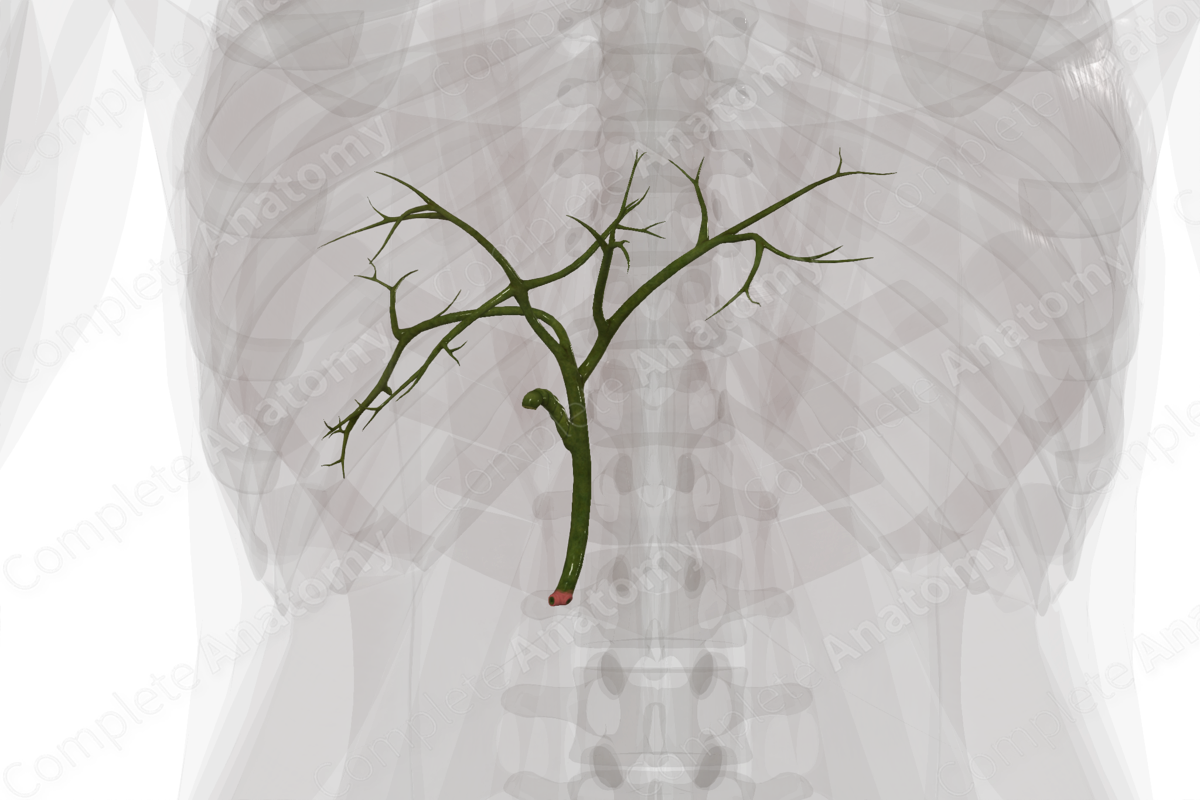
Description
The extrahepatic bile ducts consist of the common hepatic duct and its branches, the cystic duct, and the bile duct.
Bile is collected from the liver segments by the segmental ducts. The right segmental ducts receive bile from segments V and VIII of the liver and unite to form the anterior branch of the right hepatic duct. Right segmental ducts that receive bile from segments VI and VII unite to form the posterior branch of the right hepatic duct. The anterior and posterior branches merge to form the right hepatic duct.
The left segmental ducts drain bile from segments II and III, and commonly segment IV and segment I (caudate lobe). Sometimes, segment IV may drain directly into segment II or III ducts, the anterior branch of the right hepatic duct, or even directly into the common hepatic duct (Standring, 2016).
The right and left hepatic ducts become extrahepatic and unite to form the common hepatic duct. This duct passes through the hepatoduodenal ligament, accompanied by the hepatic artery and the portal vein, a triad known as the portal triad. At its distal end, the common hepatic duct unites with the cystic duct, a duct connecting the biliary system to the gallbladder. This union forms the bile duct.
The bile duct transmits the bile collected from the liver, or bile stored in the gallbladder, to the duodenum.
References
Standring, S. (2016) Gray's Anatomy: The Anatomical Basis of Clinical Practice. Gray's Anatomy Series 41 edn.: Elsevier Limited.
Learn more about this topic from other Elsevier products





